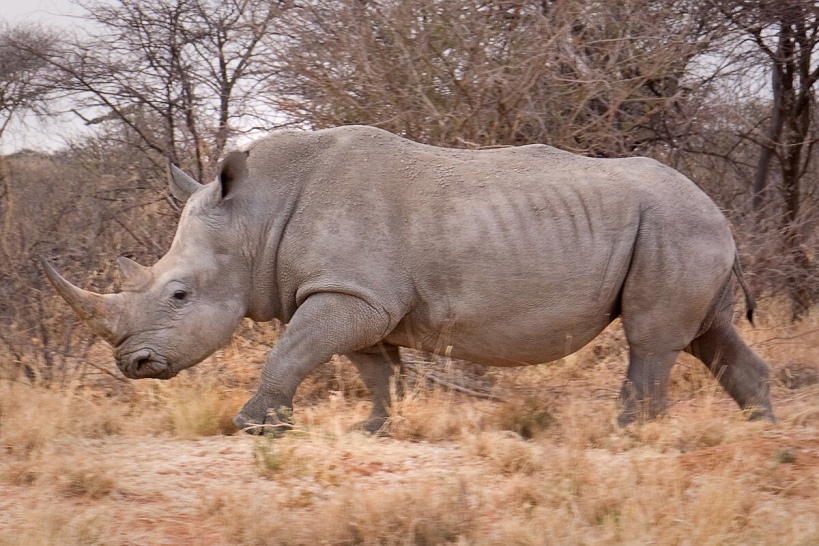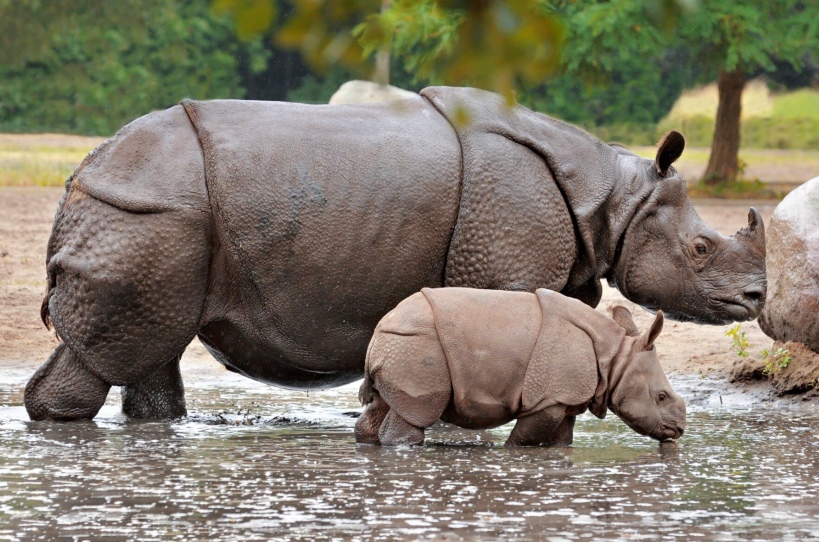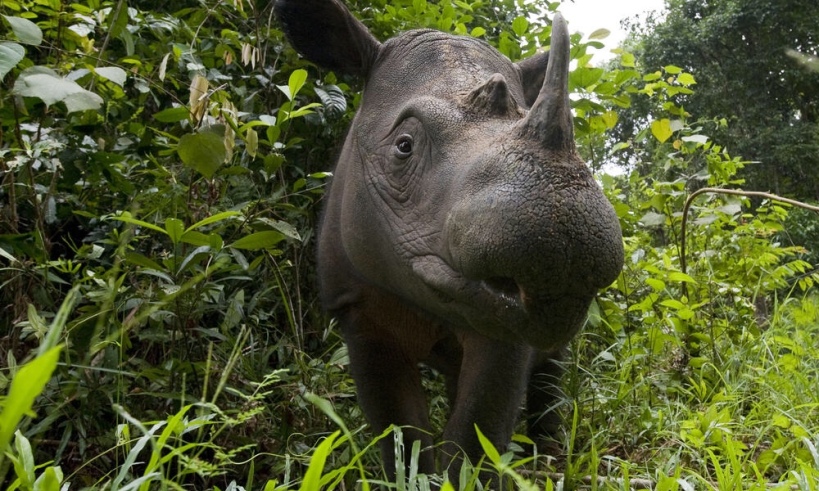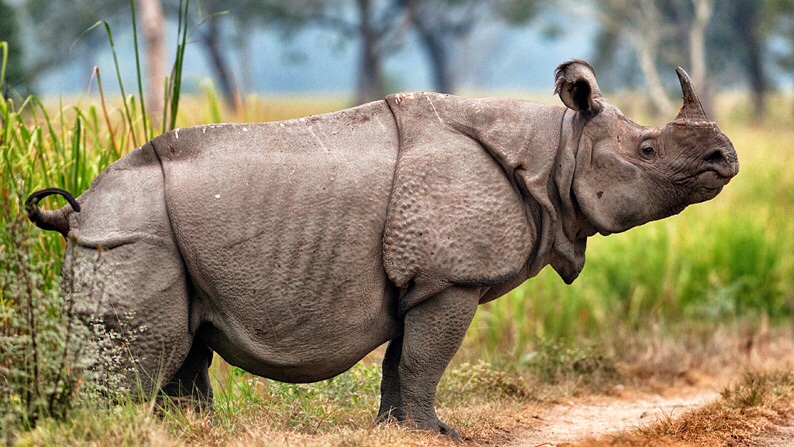Today is World Rhino Day!
These massive creatures have been roaming the Earth for millions of years. Their great size and strength has enabled them to survive throughout the years in harsh conditions. One thing that makes the rhino unique is its horn. Their horns are strong but also softer than you would expect. Rhinoceroses rub their horns against rocks to shape them to their liking.
There are five species of rhinos. They are the white rhino, black rhino, greater one-horned rhino, Sumatran rhino, and the Javan rhino. They all have quirks and characteristics that make them unique.
WHITE RHINO

The white rhino is the largest rhino species in Africa. It has a square lip related to it dietary habit of grazing. Unlike most rhinos, white rhinos are known to be social. They hang out in crashes and wallow in mud on hot, sunny days.
FUN FACT: White rhinos are actually gray. Their name came about through a mistranslation.
HABITAT: Africa
STATUS: Near threatened
BLACK RHINO

The black rhino is the smallest species of rhino in Africa. They have poor eyesight and will attack anything with an unfamiliar scent just to be safe. They are solitary creatures but the females are known to be very good mothers, keeping their children with them for years before they are ready to let them go.
FUN FACT: Like the white rhino, black rhinos are also gray! Whoever named them must have thought “hey we’ve got white ones so now we need black ones”.
HABITAT: Africa
STATUS: Critically endangered
GREATER ONE-HORNED RHINO

The Greater one-horned rhino, also known as the Indian rhino, is the largest rhino species. Just like their name suggests, they only have one horn. Their skin also folds in a unique way and makes them look like they’re wearing armor at all times.
FUN FACT: They spend most of their time wallowing in water and are even known to feed underwater!
HABITAT: Asia
STATUS: Vulnerable
SUMATRAN RHINO

The Sumatran rhino is the smallest species of rhino. Their numbers have decreased rapidly due not only to poaching, but also due to a loss of habitat. Their homes are being destroyed by those harvesting palm oil.
FUN FACT: Sumatran rhinos are the hairiest species of rhino alive today and the closest living relative to the woolly rhino.
HABITAT: Asia
STATUS: Critically endangered
JAVAN RHINO

The Javan rhino is the most critically endangered of all the rhino species with less than one hundred alive on the planet. All of these rhinos live in a captivity and are being actively protected from poachers. The Javan rhino likes to graze but also has a long upper lip for eating twigs and leaves
FUN FACT: Female Javan rhinos do not have horns.
HABITAT: Asia
STATUS: Critically endangered
DID YOU KNOW?
Did you know that a rhino’s horn is made out of keratin?
That’s the same stuff that your fingernails are made of! A rhino’s horn is curved because keratin in the front grows faster than keratin in the back.
Did you know that a group of rhinos is called a “crash”?
You probably won’t use that term very often because most rhino species are solitary meaning they prefer to be alone. Also, a male rhino is called a bull, a female is called a cow, and baby rhino is called a calf. Sound familiar?
Did you know that the rhino has no natural predators?
They’re just too big and strong! You might think that with no other animal out there taking them down that the rhino should be strong in numbers. But unfortunately you’d be wrong.
POACHING
Unfortunately, some people think that rhino horns are more valuable than they actually are and even think they have healing powers. People poach these creatures to harvest their horns which are then sold on the black market as trinkets or ground into “medicinal” powders. Some also shape the horns into various weapons such as daggers. Poaching has directly contributed to their near-extinction.
Of the five species of rhinos, 3 are considered critically endangered. Some species are even extinct in places where they once thrived. Thanks to sanctuaries, the rhino’s numbers are slowly rising but we still need to be vigilant against poachers and those who would harm these creatures for financial gain.
HOW YOU CAN HELP
- Do not participate in the buying or selling of rhino horn products
- “Adopt” a rhino through the WWF
- Only use sustainable wood, paper, and palm oil products
-Jesse Granger
Follow Jesse on Instagram (@JGBushranger) and Twitter (@JGBushranger)
Like his page on Facebook: Jesse Granger: Bushranger
